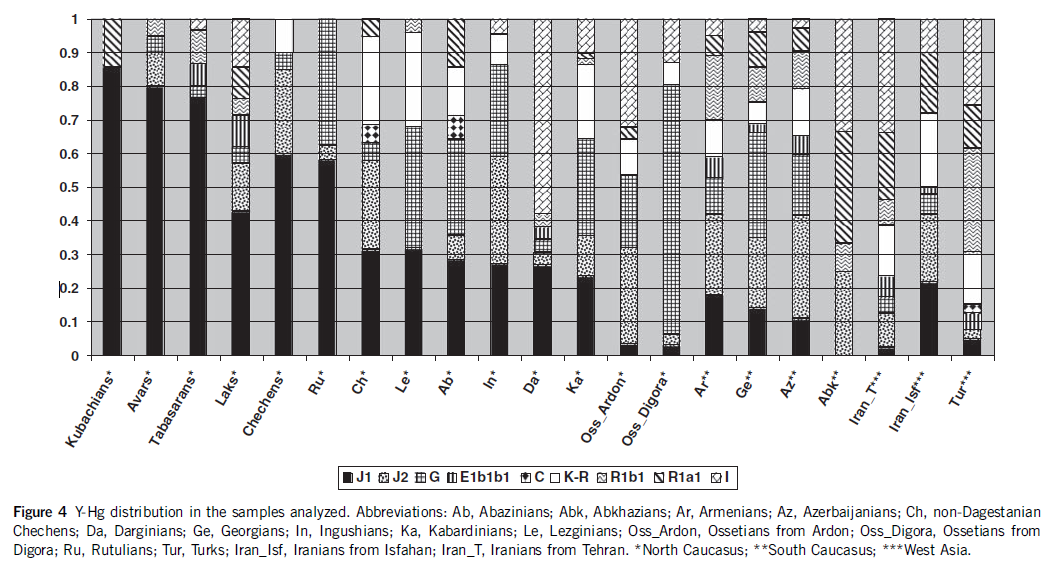Anthro-inclined
Regular Member
I Posted It Just Up The Page, But Since I Like Ya Here It Is Again: http://dienekes.blogspot.ca/2009/12/...nders.html?m=1I have never seen any study which implies high frequency of Y-DNA I in Dagestan. Can you post it?
Links Dead So Here's a graph of the results. Its hard to see but DA are the dargingians and the largest chunk is I.


